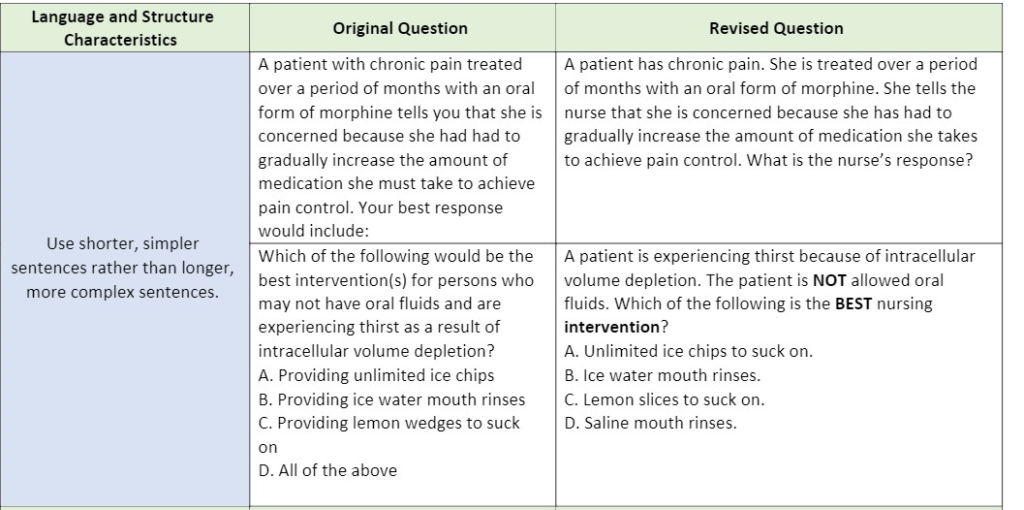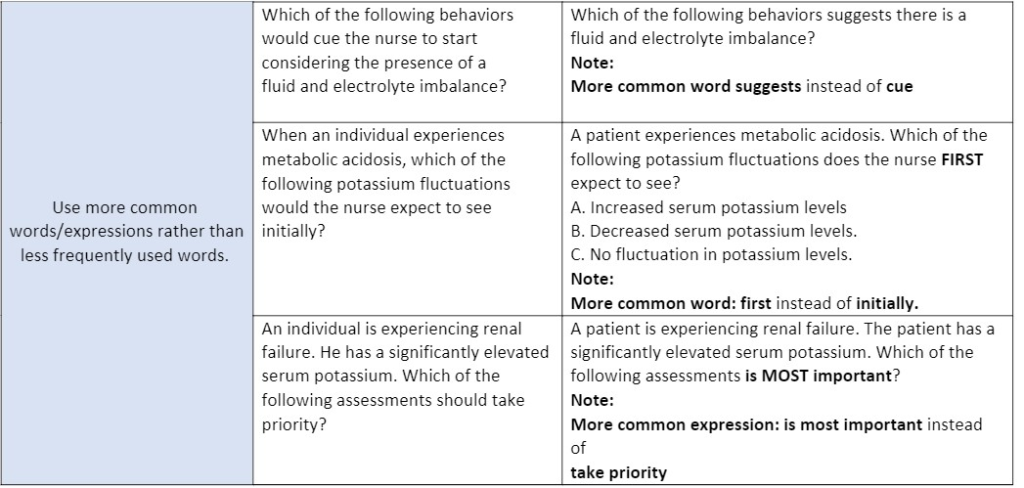
Designing Multiple Choice Questions with EAL in Mind
A Multiple-Choice Question (MCQ) item consists of a problem, known as the stem (written as a question or as a partial sentence that requires completion), and a list of suggested solutions, known as options. The options consist of one correct or best option, which is the answer, and incorrect or inferior options, known as distractors.
Research indicates that the linguistic structure of MCQs contributes to performance gaps between students who use English as a Native Language (ENL) and those who use English as an Additional Language (EAL) or English as a Second Language (ESL) (Riccardi et al. 2020). This post highlights some tips and strategies for you to consider when developing MCQs for EAL students.
Best Practices for Designing Effective and Linguistically Accessible MCQs for EAL Learners
Each point below includes a sample question in the accordion drop-down – click on the image to make it larger. All examples can also be found in this document.
1. Measuring content knowledge.
2. Scaffolding MCQ items.
3. Using short, simple sentences.
7. Using more common words.
Considerations for Developing MCQs for EAL Learners
- Build additional comprehension time into MCQ assessments with a linguistically diverse student body.
- After the test, review student performance on questions.
- Consider the different types of exam/test questions students may have encountered prior to coming into the program.
- Come up with a few possible MCQ questions after each lecture.
- Consider having students involved in the MCQ pool development.
Before Engaging EAL Students in MCQs, Ask:
- How much experience they have had taking MCQs?
- What challenges have they experienced with taking MCQs in the past?
- How well do they generally do on MCQs?
After Engaging EAL Students in MCQs, Ask:
- How did you do on this MCQ test?
- What did you have difficulty with, if anything?
- Please talk through each of the items you got wrong on the test. Tell me what you were thinking as you read each test item and the possible answers. Pretend you are retaking the test right now and are trying to decide which answer is the correct one.
Designing Linguistically Accessible MCQs for EAL Learners: Background & Significance.
MCQ item development and use is likely to persist (or rise) in higher education given growing enrollments resulting in larger class sizes and the shift to online learning and testing through learning management systems. Some challenges that MCQ items pose for EAL students include requiring more time to complete MCQ exams, asking more clarifying questions, and scoring lower on such exams compared to ENL students. Language use in MCQ development that is above the ability level of learners can pose a cognitive burden and lead to lower student scores, specifically as a result of the linguistic complexity of test items (Parkes & Zimmaro, 2016).
Moreover, within the field of assessment, linguistic accessibility is central to the validity and reliability of the MCQ item writing process. A large emphasis is placed on your role as faculty, especially those who teach linguistically heterogeneous student bodies, to ensure clarity and prevent unhelpful/unnecessary variability in questions that may affect the meaningfulness and accuracy of the MCQ items. You also have the responsibility to provide an increased amount of support for international students to ensure fairness and provide them with rich assessment experiences. It is thus important to consider the linguistic accessibility of MCQs, given that students are likely to encounter this form of assessment early as they are adjusting to postsecondary studies (Lyon et al., 2022).
References
Lyon, K., Roberson, N., Lam, M., Riccardi, D., Lightfoot, J., & Lolliot, S. (2022). A Sociological Lens on Linguistic Diversity: Implications for Writing Inclusive Multiple-Choice Assessments. Teaching Sociology, 00(0), 1-13. https://doi.org/10.1177/0092055X221134126.
Parkes, J. & Zimmaro, D. (2016). Learning and assessing with Multiple-Choice Questions in college classrooms. Routledge.
Riccardi, D., Lightfoot, J., Roberson, N., Lam, M., Lyon, K. A., & Lolliot, S. (2020). Investigating the effects of reducing linguistic complexity on EAL student comprehension in first-year undergraduate assessments. Journal of English for Academic Purposes 43(1), 1475–1585.













